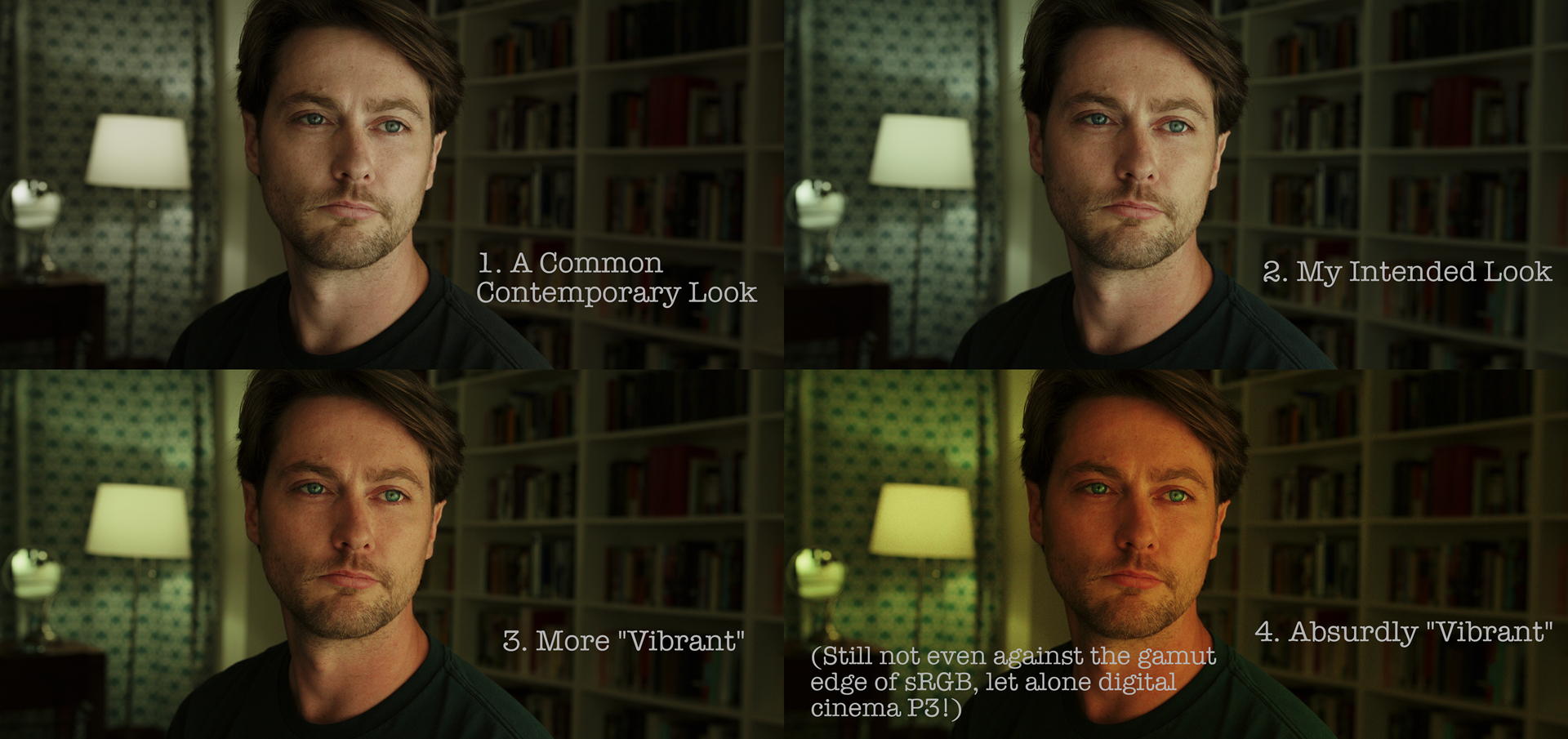ERRORS VERSUS ENHANCEMENTS IN COLOR REPRODUCTION
Nov 16, 2019
This is a much elaborated version of a Twitter thread I wrote in reply to someone who asserted that recording a digitally mastered movie to film negative and then contact printing it "enahances" the color. And a second person who asked doubtfully if that's possible:
It’s certainly possible to distort colors at the time of doing a film-out, but that seems like a problem not an "enhancement" if the filmmakers were happy with their color grade. If “more vibrant” was the intent or somehow “better,” they’d have made it so in the original color mastering. So, "distorted" or "corrupted" might be a better adjective than "enhanced" to describe a color shift away from the final mastered color that was supervised and approved by the filmmakers.
The images below demonstrate that digital color rendition is capable of showing very saturated colors. So, this other (more "vibrant") rendition was well within what could have been done in the original digital master files, which means it's not outside the limits of the display format and that the filmmaker-authored (less saturated) look was a result of artistic choice rather than of technical limitation.

Since the filmmakers were not prevented from making those "more vibrant" colors in the color mastering and actively chose not to, I don't see how it's an "enhancment" if there were inaccuracies in the process of rendering those final approved colors onto one of the several target formats (in this case, onto a film print).
If the film-out is more vibrant than the DCP, then (unless the filmmakers went back and changed their color decisions between the creations of some of the deliverables), the divergence is an error in the setup for filming out: an error in the lookup table that prepares the digital files to go to the film recorder.
That table's only goal is to reproduce the author's intent faithfully, not to change it. Whether or not you use the euphemistic verb "enhance" instead of the more accurate word "distort," a change of that sort is still not what that lookup table is supposed to do -- it's supposed to properly prepare the files to go to the film recroder for faithful color reproduction of the approved colors. If those final colors and tones of the film-out are different from the digital master files they're made from, that's an error or lack of precision in the film-out lookup table, not an magical enhancing property of film itself as a substrate.
The sample images above aren't even up against the edge of what normal sRGB (or rec1886) can do, let alone the wider-gamut digital cinema (DCI P3), so the "vibrancy" or whatever you want to call it is a choice in visual authorship, not some limit that DCP has but a film print doesn't. Either format can equally well reproduce either look (the more vibrant or the less), but the look the filmmakers actively chose in designing their color palette was the less vibrant one, so any increased vibrance is just an error in prepping the files for the film recorder, not something inherent to film -- it's actually itself a computational issue, not photochemical one.